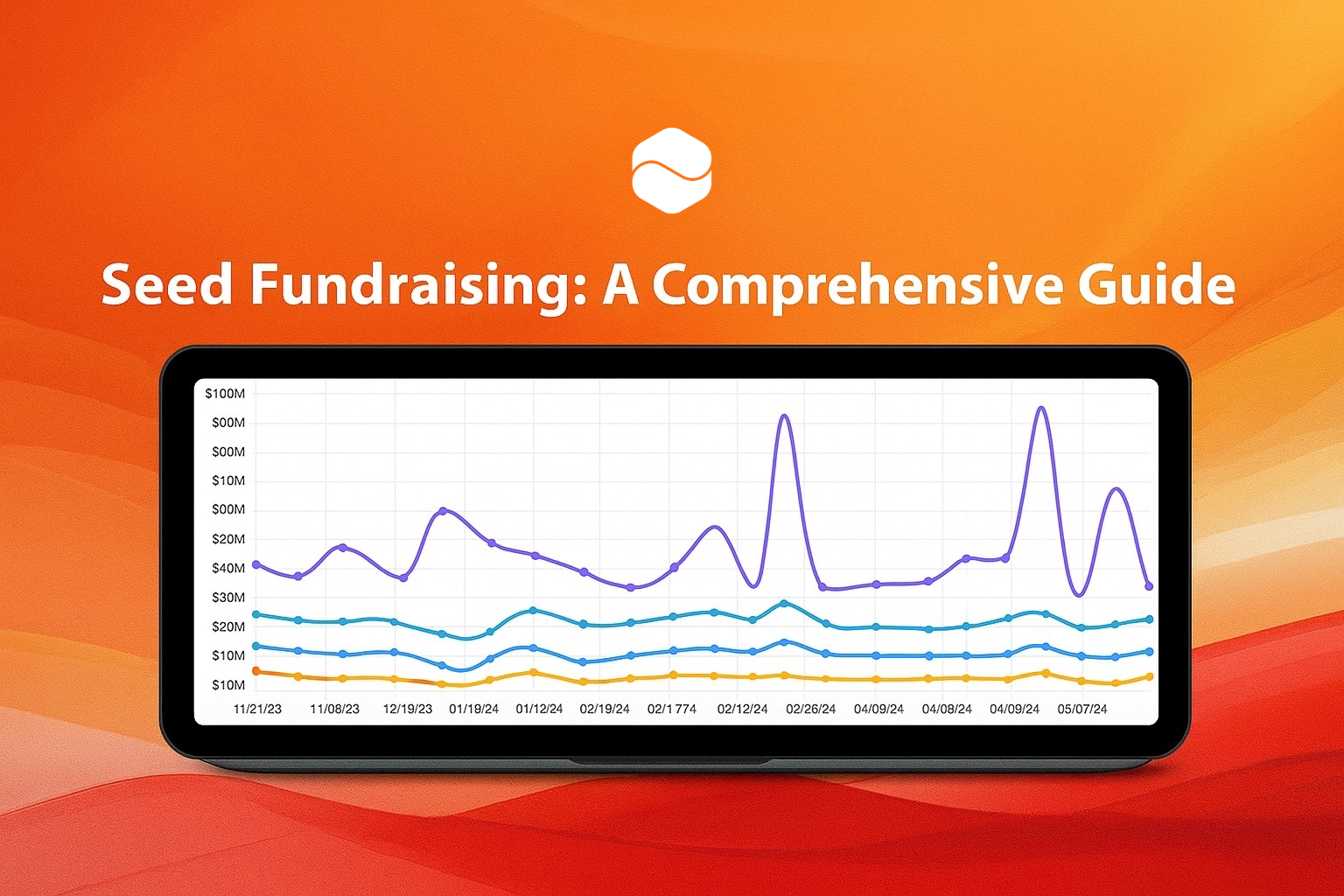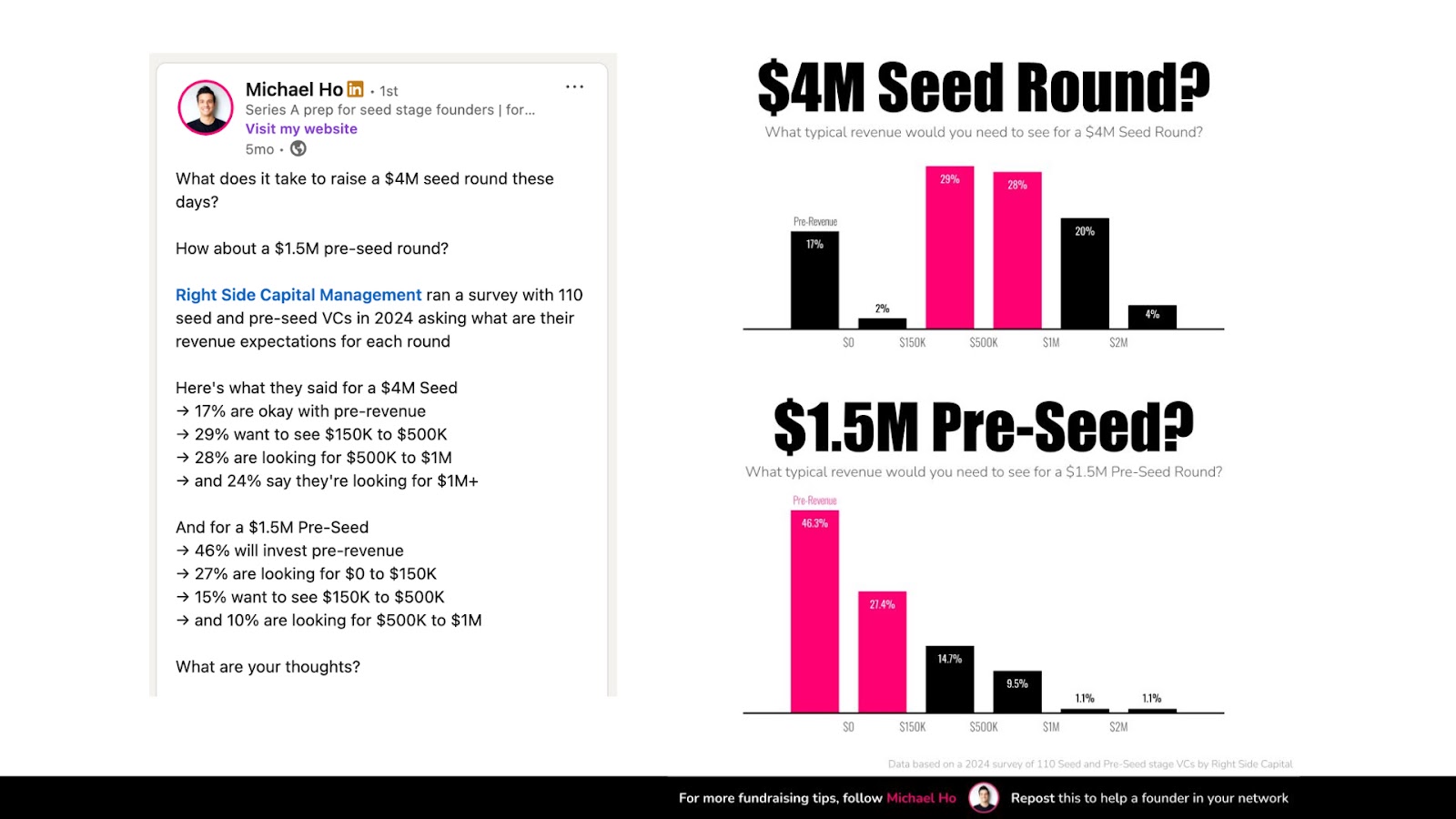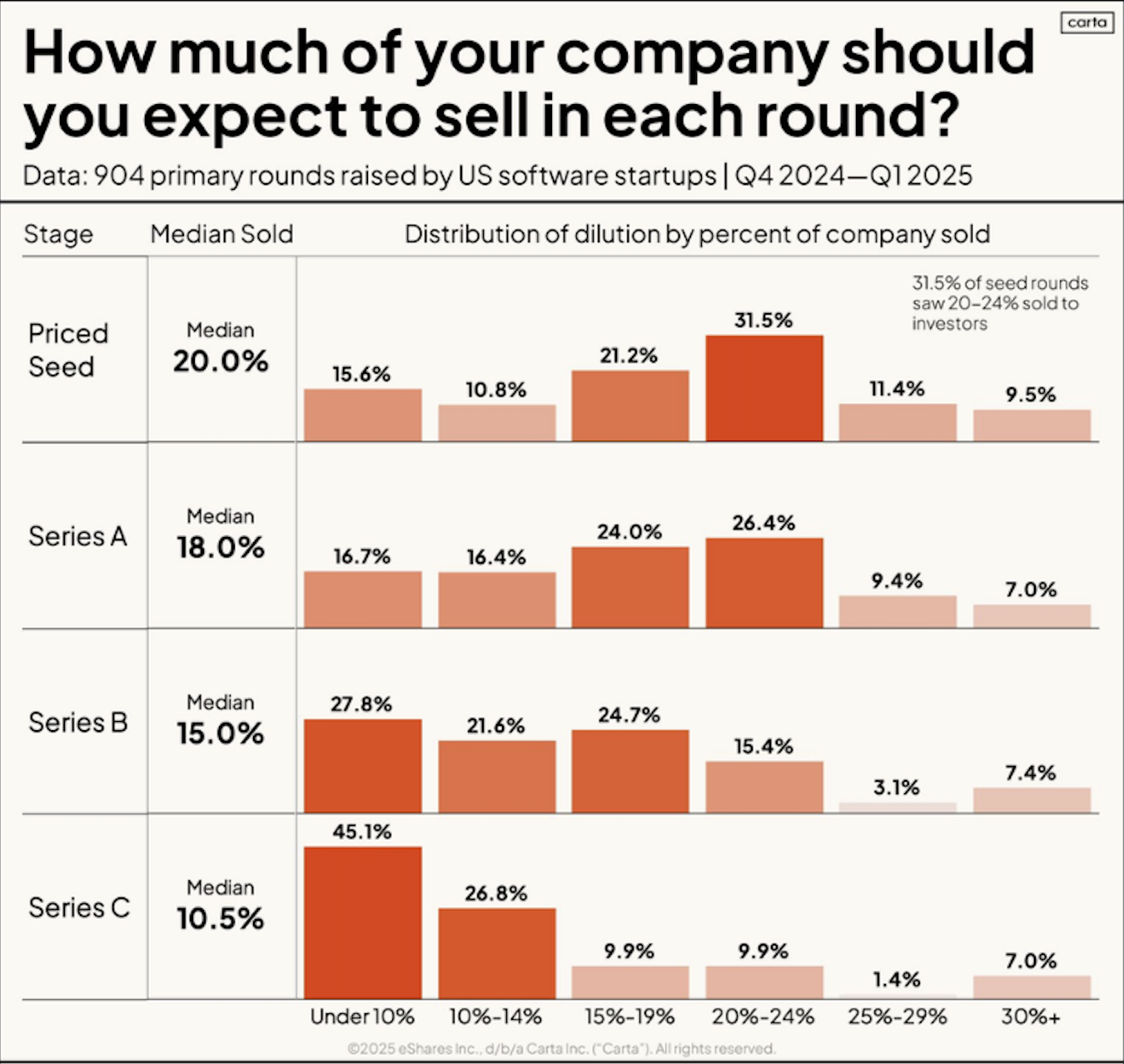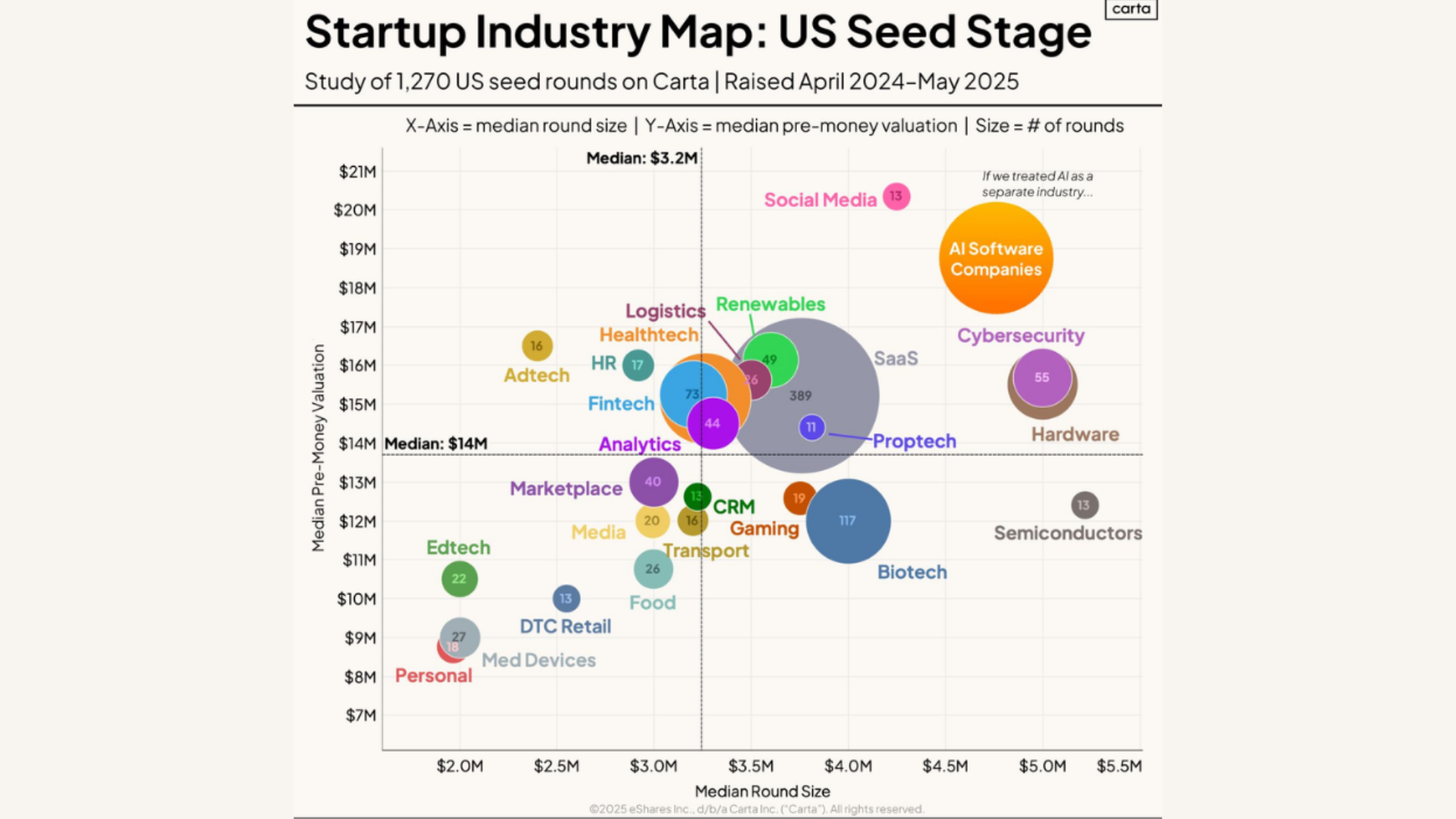Seed Fundraising: A Comprehensive Guide

How Does Seed Funding Work?
Seed funding is the first official round of investment that helps a startup move from concept to execution. Typically raised after the founders have invested their own money or received support from friends and family via a pre-seed round, seed funding is used to take a minimum viable product (MVP) to market, hire key team members, and search for initial traction. Investors in this stage often include angel investors, seed-focused venture capital firms, or startup accelerators. In exchange for capital, usually between $2 million and $5 million, founders typically give up 15–20% equity in the company. Alternatively, the investment might be structured as a Post Money SAFE with a valuation cap, allowing the official valuation to be determined in a later priced equity round. Seed funding is critical in helping startups validate their business model and prepare for larger rounds like Series A.
Startup Fundraising: Understanding the Various Rounds of Funding
As a startup grows and develops, it typically goes through several rounds of fundraising. These rounds of funding can vary depending on the industry and location of the startup, but here are the most common rounds that startups typically go through:
- Friends & Family Round: < $250k, provides initial capital to launch the business, can include angel investors, family, and friends.
- Pre-Seed Round: < $2.5M, used to develop a proof of concept, conduct market research, and build a team before seeking seed funding. Target investors are mostly Friends/Family, Micro VC's, Angels, Incubator/Accelerator. Investment is used to prove technology.
- Seed Round: <$5M, used to acquire customers, further develop a minimum viable product, and validate the business model. Target investors are mostly Micro VC's, Angels, Institutional VC's. Investment is used to prove the market.
- Series A: <$20M, used to scale the business, expand operations, and hire additional staff. Target investors are mostly VC's, Super Angels, Family Offices. Investment is used to prove scale.
- Series B: <$40M, Used to help the startup further grow its operations, develop new products, and hire additional staff. Target investors are mostly Institutional VC's & Family Offices. Investment is used to prove profitability.
- Series C and up: <$80M, Funding provided to expand into new markets or make acquisitions, used to help the startup further grow its operations and increase its valuation. Target investors are mostly VC's, Crossover Funds, Growth Equity, Family Office. Investment is used to prove exit opportunities.
- Exit Event: An IPO or acquisition that provides liquidity to the startup’s shareholders and can be the final round of funding.
It’s worth noting that bootstrapping remains a viable path, and founders should be prepared to give up a board seat in any round that includes institutional investors.
By understanding the various stages of fundraising and identifying the right investors for each phase, startup founders can more effectively navigate the capital-raising journey and secure the funding needed to grow and scale. This includes recognizing when pre-seed funding may be the right fit for their business.
How Much Should You Raise for a Seed Round?
The amount you should raise in a seed round depends on your startup’s specific needs, but a good rule of thumb is to raise enough to give yourself a minimum of 18 to 24 months of runway. This means securing enough capital to build your product, validate market demand, hire key team members, and reach the revenue milestones (currently around $3M in ARR) that will attract Series A investors. For most startups, this typically falls between $500,000 and $2 million. However, the ideal amount also depends on your burn rate, business model, and fundraising environment. You want to raise enough to hit your next major inflection point, without giving away more equity than necessary at a low valuation. Michael Ho and Right Side Capital some great data on the revenue traction required for raising a Pre-Seed Round vs Seed Round:

How Do I Get Seed Funding?
Getting seed funding involves a combination of preparation, networking, and storytelling. First, you need to build a compelling pitch deck that clearly explains your problem, solution, market opportunity, business model, traction (if any), and team. Investors want to see a strong founding team, a clear vision, and evidence that your product solves a real problem. Next, identify the right investors, this could be angel investors, seed-stage venture capital firms, startup accelerators, or even friends and family. Start with warm introductions through your network or reach out directly with a concise and tailored pitch. You’ll likely need to have multiple conversations, refine your story, and be transparent about your roadmap and funding needs. Being coachable, confident, and data-driven can help you stand out in a competitive seed-stage environment.
How Much Equity Should You Give Up?
In a typical seed round, founders usually give up 10% to 20% equity in exchange for the investment. This range helps balance raising enough capital to grow while retaining enough ownership to stay motivated and in control. While the median amount of equity sold in a priced Seed Round is 20%, the exact percentage depends on your company’s valuation, the amount you raise, and investor negotiations. If you raise too little, you might struggle to hit key milestones; if you give up too much, you risk diluting your stake early. Using instruments like convertible notes or SAFEs can delay valuation discussions until later rounds, but ultimately, aim for a deal that aligns with your long-term vision and preserves your ability to attract future funding. Peter Walker is a fnatastic source of fundrasising data and information and is worthwhile follow on Linkedin. He recently shared some information around average dilution for a given round:

What is the Average Seed Size?
The average seed round size varies by industry and geography, but in today’s market, it typically ranges from $1 .5 million to $6 million. In major startup hubs like Silicon Valley or New York, seed rounds can trend higher, sometimes reaching $6 million or more, especially for experienced founders or startups with early traction. Outside of these regions, or for more capital-efficient businesses, seed rounds may fall closer to $1.5 million to $3 million. The key is to raise enough to achieve meaningful milestones—like product-market fit or early revenue, that will position you for a strong Series A.
Seed Stage valuation data from Carta broken out by industry shows us the post money valuations by round size of most Seed Rounds:

What Do Seed Investors Want to See?
When considering potential investment opportunity, Seed investors are typically looking for the following:
- Strong Founding Team: Investors bet on people at this stage. They look for founders with domain expertise, a clear vision, complementary skill sets, and the grit to execute.
- Clear Problem & Solution: A well-defined problem and a compelling solution are critical. Investors want to see that you’re solving something real and painful for a specific audience.
- Large Market Opportunity: Even if you’re starting small, your potential market should be big enough to support significant growth and return on investment.
- Early Traction or Validation: In today's environment, Seed investors are looking for existing revenue, north of $150k per year.
- Unique Insight or Competitive Advantage: What makes your startup different? It could be proprietary tech, a unique go-to-market strategy, or a deep understanding of the customer.
- Scalable Business Model: Investors want to see how the business could scale efficiently over time, ideally with high margins and network effects.
- Clear Use of Funds: Show how the capital will be deployed, e.g., product development, hiring, customer acquisition, and how that ties into reaching your next milestone.
- Vision for the Future: Even if you’re early, having a long-term vision shows you’re thinking beyond the MVP and toward building something big.
By addressing these key areas, you can increase your chances of securing pre seed funding and setting your business on the path to success.
Conclusion
Seed funding is a pivotal step in turning a startup idea into a viable business. By understanding how much to raise, how much equity to give up, and what investors are looking for, founders can approach the fundraising process with clarity and confidence. Whether you choose to bootstrap, pursue pre-seed capital, or raise a full seed round, the key is to align your funding strategy with your business goals and growth milestones. With the right preparation, network, and story, securing seed funding can be the launchpad that sets your startup on a path to long-term success.


.png)
.png)


